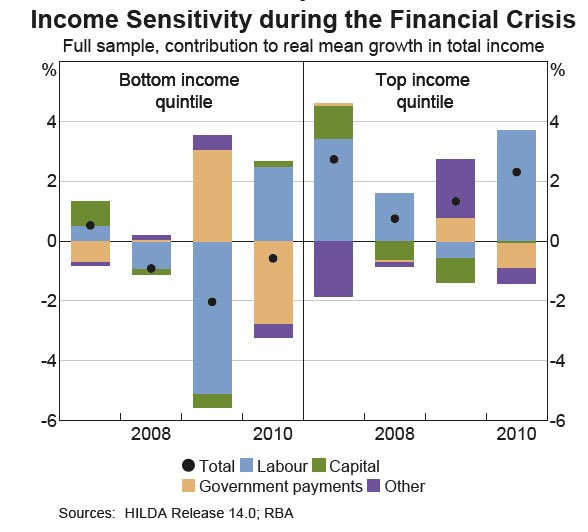In the latest edition of the RBA Bulletin, released yesterday, there is a interesting segment on how the income of different individuals varies in response to changes in the state of the economy, using data from the HILDA survey.
Results suggest that the incomes of bottom- and top-income earners are the most sensitive to the state of the economy, although for different reasons: during strong economic conditions, the labour income of bottom-income earners rises, due to lower unemployment, while the capital income of top-income earners also rises, due to higher dividend and interest earnings. The effect on bottom-income earners appears to be stronger than that on top-income earners, suggesting that income inequality declines when economic conditions are strong.
Labour income is most sensitive at the bottom of the income distribution as those households are more exposed to unemployment and to adjustments in hours worked and/or wages. Capital income is responsive to GDP growth for those in the top and bottom income quintiles; however, capital income is much more sensitive for the top income quintile and is driven mainly by changing returns to financial assets.
These effects provide evidence for both a ‘labour income’ channel and a ‘capital income’ channel in Australia. The two channels have partly offsetting effects on inequality, but the response of labour incomes appear to have the stronger effect for Australia. This suggests that changes in economic conditions will have a more pronounced effect on bottom-income groups, which implies that stronger economic conditions tend to reduce income inequality in Australia, and vice versa.


